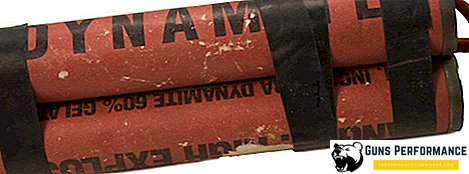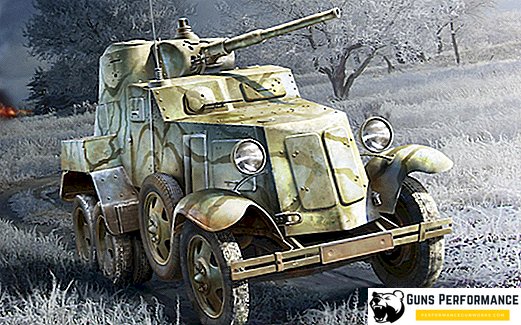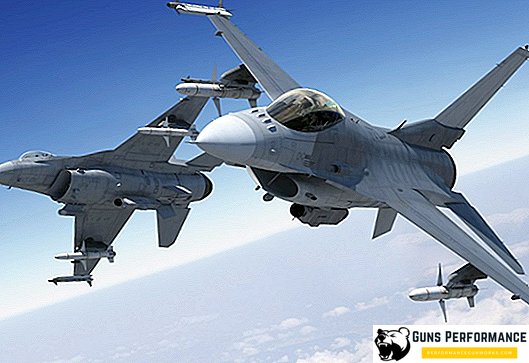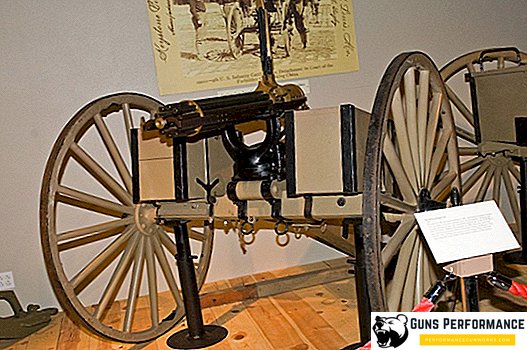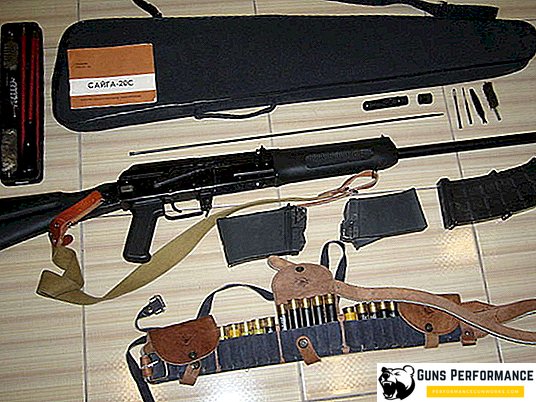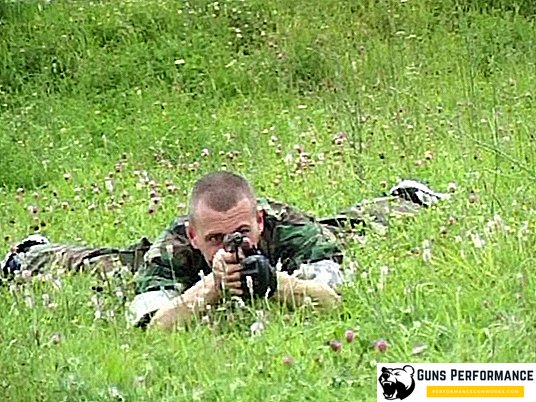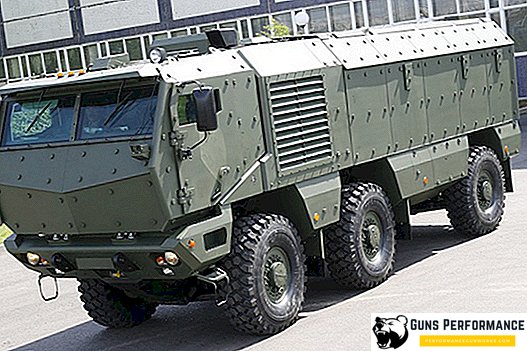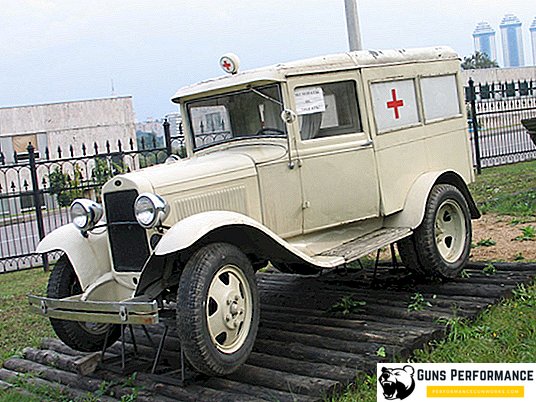Despite its young age, the history of tank building is extraordinarily rich and fascinating. Tanks appeared on the battlefield only a hundred years ago, but the development of this type of military equipment was rapid, the tank can be safely called the main military invention of the last century. Only at the end of the 20th century did their importance on the battlefield begin to decrease.
During its short, but very turbulent history, the tank has changed beyond recognition: the other was its weaponry, means of defense, the tactics of use on the battlefield changed. The modern combat vehicle also resembles the tank of the First World War, as the first aircraft made by the Wright brothers is similar to the fighter of the last generation. This was made possible by the work of thousands of weapons designers from different times and nationalities.
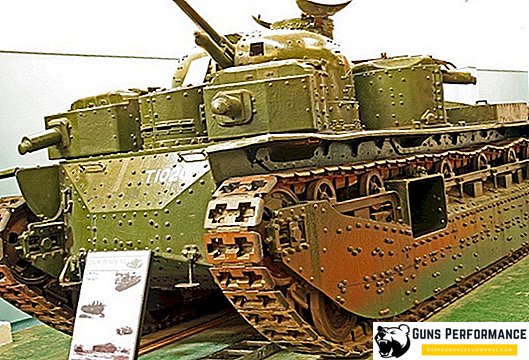
From the very beginning of the tank era, every self-respecting country sought to create more armored hordes and staff them with the most formidable technology. They did not spare money on this and did not restrict the flight of design fantasy too much. As a result, cars appeared with a completely bizarre appearance and characteristics. Most of them remained on paper or in the form of prototypes.
Therefore, the fate of unusual tanks, which not only went into the series, but even managed to make war, is particularly interesting. One of these machines was the Soviet heavy five-turreted tank T-35. He was created in the early 30s, he had several modifications and managed to take part in the first battles of the Great Patriotic War. The heavy tank T-35 entered the history as a serial tank with the most towers.
But the matter is not only in the number of towers, the T-35 is a real symbol of the power of the USSR and the power of its armed forces. None of the central parades did without this tank. When this Stalinist "dreadnought" was driving along the pavement of Red Square, it was immediately becoming clear to everyone that the "armor was really strong."
Speaking of symbolism, it should be said that the T-35 tank is depicted on one of the most revered Soviet medals "For Courage".
History of creation
The creation of multi-turreted tanks was by no means a distinctive feature of Soviet tank building or a display of the megalomania inherent in the USSR. Immediately after the end of the First World War, the installation on tanks of several towers was considered a common thing and fully corresponded to the military doctrine of that time.
In tank classifications of almost all large countries of that time there were heavy tanks, the task of which was to break through the strongly fortified defensive lines of the enemy. Such vehicles were supposed to have powerful defense (ideally counter-missile) and powerful weapons, they had to directly accompany the infantry during the attack on enemy positions and methodically suppress enemy firing points.
In the classification that was adopted in the USSR before the war, there were as many as two types of heavy tanks, the first of which was to break through "heavily fortified defensive lines", and the second task was to overcome particularly strong enemy fortifications. It is to the second type of machines and belonged to the T-35.
In the late 20s, the Red Army was armed with quite good samples of T-18 light tanks, but with heavy vehicles there were problems - British tanks Mk. V, who fought in World War I and were taken as trophies from the White Guards, were clearly outdated. The task was to create a new domestic heavy tank.
However, there was an acute lack of experienced personnel for the production of their own cars.
The development of the first Soviet heavy tank is associated with the name of the talented German designer Edward Grotte. In early 1930, a design team under his leadership began work on the creation of a medium-sized TG-1 tank. In domestic historical literature, this machine is usually called the "Grotte tank."
In 1931, the first prototype of the machine was made, which was immediately transferred for testing. Work on the TG-1 took place in an atmosphere of strict secrecy, they were closely watched by the top leadership of the country.
However, despite many innovative technical solutions used in the creation of TG-1, it was never launched into widespread production. The car was too complicated for the Soviet industry and differed too high cost. The development of this machine allowed the Soviet designers to gain experience and begin to create their own heavy tank - T-35.
In addition to creating TG-1, Grotte had other projects: he proposed to the Soviet leadership to create a car weighing up to 100 tons, armed with three or five towers.
Meanwhile, in the USSR, work continued on the creation of a heavy multi-turreted tank. In 1931, the prototype T-35-1 was created, which had a mass of 42 tons, was armed with three guns (one 76 mm and two 37 mm) and three machine guns. The car had five towers and in many ways resembled the English tank Independent, whose prototype was built in 1929. During this period, the Soviet military delegation visited England and had the opportunity to get acquainted with the British machine, but it is not known how much it influenced the Soviet designers.

The crew of the T-35-1 consisted of ten people, the car had an engine of 500 liters. with. that allowed her to reach speeds of up to 28 km / h. The maximum armor thickness reached 40 mm, and the cruising range was 150 km.
In 1933, the next modification of the tank, the T-35-2, was made; he even managed to take part in a parade on Red Square. However, already at this moment, the designers developed the T-35A - a new tank, which had to go into mass production. This machine was very different from its predecessors: the length and shape of the hull were changed, towers of a different design and size were installed on the tank, the undercarriage of the tank was also modified. In fact, it was already a completely new car.
In 1933, the T-35A was adopted. Production was established at the Kharkov locomotive factory. In 1934, the heavy T-35 tank began to enter the army.
A total of 59 units of this machine were produced.
Various changes and improvements were continuously made to the tank. The thickness of the armor was increased, the power of the power plant was increased, the towers acquired a conical shape. The mass of the tank increased, in later samples it was 55 tons.
Use of T-35
The T-35 was not used in any of the conflicts of the 1930s in which the USSR took part. The five-tower giants were not seen either in the Soviet-Polish war, or in the conflicts in the Far East, or in the Finnish campaign. At the same time, in the USSR, in the Winter War, heavy tanks were used, while the QMS, T-100, KV were driven around - heavy vehicles of the new generation, which were to replace the T-35. It is obvious that the leadership of the Red Army perfectly understood the real capabilities of the T-35 and that is why it kept him away from the front.
The T-35 can be called the main "ceremonial" tank of the 1930s: not one of the parades on Red Square or Khreshchatyk did without showing these giants.
"Sniff powder" these tanks had at the very beginning of World War II. Most of these machines were located in units located on the westernmost border, in the Lviv region. The T-35 participated in a border battle, and most of them were abandoned by their crews.
The tank showed extremely low combat qualities, but things were even worse with the reliability of the vehicle. Only seven tanks were lost directly during the fighting, thirty-five vehicles simply broke down and were abandoned or destroyed by crews.
Some more cars (according to one information five) took part in the defense of Kharkov in 1941, but there is no information about their combat use. The last two T-35s participated in the defense of Moscow.
The first days of the war were for T-35 a real “high point”. The Germans loved to take photos against the background of the defeated Russian giants. Despite the relatively small number of these tanks, the number of photographs of German soldiers on the background of a wounded or abandoned T-35 just rolls over.

The fate of two Soviet T-35s, which in good condition were captured by the Nazis at the beginning of the war, is interesting. One tank hit the Kumersdorf test site, where it was used as a target, while the other one stood at the Zossen test site. The Germans used it during the battle for Berlin, but soon he was shot down by the Red Army fighters from the captured faust cartridge.
Today, the latest sample of this unique machine is in Kubinka.
Description of construction
T-35 has a classic layout, with the location of the power plant in the rear of the case. This is a five-turreted machine, which has two tiers of weapons layout. The hull is divided into five compartments: the compartment of the front towers with a driver's seat, the separation of the main towers, rear towers, as well as the engine compartment and the transmission compartment.
The tank hull is welded, there are elements fastened with rivets.
On the roof of the front compartment were installed two towers: machine-gun and gun. The first was occupied by the machine gunner, and the gunner and loader were placed in the second tower.
The main tower of the tank was completely identical to the T-28 tower, which significantly reduced the cost of its manufacture and simplified maintenance. The tower is equipped with a suspended floor for the convenience of the tank crews.
Small machine-gun turrets are completely identical to similar towers of the T-28 tank, and medium-sized turrets - to the towers of the BT-5 tank.
On the T-35 was installed four-stroke gasoline aviation engine M-17, which had a capacity of 500 liters. with.
The transmission provided four speeds when moving forward and one back.
The chassis consisted of eight (on each side) rubberized track rollers, six supporting rollers, the rear wheels were leading. The suspension of the tank was blocked, two rollers were installed in the trolley, two coil springs provided springing.
The undercarriage of the tank was closed by an armored bulwark consisting of several armor plates.
The main task of the T-35 was to support the infantry during the breakthrough of the enemy’s defensive lines, he was to deal with the destruction of the fortifications of the enemy.

As conceived by the designers, a 76-mm cannon located in the main turret was to be used to defeat for-ti-fi-ka-ts-on-co-operations, and 45-mm cannon were designed for simpler purposes.
Auxiliary armament of the tank consisted of six 7.62-mm machine guns DT, which could conduct all-round fire. In each gun turret there was a machine gun coupled with a cannon. In addition, DT were installed in the machine-gun turrets, as well as in the aft part of the main tower. The latest modifications of the tank also included an anti-aircraft machine gun, which was mounted on the gunner’s main tower hatch.
The T-35 observation means were ordinary observation slits, covered with bulletproof glass, the tank commander and the commanders of the tank towers had periscope panoramic sights.
Depending on the series of the tank, the number of crews could vary from 9 to 11 people. In the main turret of the tank there were three people: the tank commander, the radio operator (loader) and the machine gunner. In each of the small gun turrets were the gunner and machine gunner. In each of the machine gun towers located one shooter.
The main tower compartment was separated from the rest of the car, the front and rear compartments were connected to each other. Between the front compartments was the place of the driver, who had a very limited overview.
Evaluation of the machine and comparing it with foreign analogues
In the prewar period, the T-35 exceeded any foreign combat vehicles in its firepower. This tank, armed with three guns and several machine guns, could create a real sea of fire around itself.
However, the low-powered power plant and the low reliability of the engine, chassis, and many other technical defects made it unsuitable for use in real combat conditions. The long march that made the T-35 as part of the 34th Panzer Division in the summer of 1941 proved to be fatal for these monsters.
The multi-turret layout of the tank overly complicated its design, increased its mass and made it impossible to reinforce the reservation. The bulky size of the T-35 made it an excellent target for both tanks and anti-tank artillery of the enemy. In battle, the speed of the T-35 did not exceed 10 km / h.
There were other problems: the tank commander had to do the work of the main gunner’s gunner, which prevented him from commanding the vehicle in battle.

Already before the beginning of World War II, it became clear that the engine was just as important a tank weapon as its cannon. It is from the maneuverability and speed that the efficiency of using this type of armored vehicles depended.
The multi-turret layout has become a dead-end branch of the development of tanks, the T-35 can be safely called its symbol. This tank is difficult to compare with foreign counterparts, because serial tanks that had as many as five towers, does not exist. These land dreadnoughts were usually made in single copies and, as a rule, they did not participate in the battles.
Specifications
| Main characteristics | |
| Combat weight, t | 50 (54) |
| Crew | 10 |
| Dimensions, mm: | |
| Length | 9720 |
| Width | 3200 |
| Height | 3430 (3740) |
| Clearance | 530 (570) |
| Armor thickness, mm: | |
| lower slope sheet | 20 |
| front slant sheet | 50 (70) |
| top slant sheet | 20 |
| front leaf | 20 |
| case sides, turret box | 20 (25) |
| bulwark suspension protection | 10 |
| body feed | 20 |
| hull roof | 10 |
| Bottom | 10-20 |
| board the big tower | 20 (25) |
| the roof of the big tower | 15 |
| board of the middle tower | 20 |
| roof of the middle tower | 10 |
| side of the small tower | 20 |
| roof of a small tower | 10 |
| Specific pressure, kgf / cm.kv. | 0,78 (0,64) |
| Maximum speed, km / h: | |
| on the highway | 28,9 |
| on the country road | 14 |
| Power reserve, km: | |
| on the highway | 100 (120) |
| on the country road | 80-90 |
| Capacity of fuel tanks, l | 910 |
| Overcoming obstacles: | |
| rise, hail | 20 |
| vertical wall, m | 1,2 |
| ford depth, m | 1 (1,7) |
| ditch, m | 3,5 |
| thickness of the tree to be dumped, cm | up to 80 |
| Armament | |
| KT-28 gun | |
| amount | 1 |
| Caliber, mm | 76,2 |
| Barrel length, klb | 16,5 |
| Vertical guidance angle, hail | -5… +25 |
| Angle of horizontal guidance, hail | 360 |
| Ammunition, pcs. | 96 |
| 20K gun | |
| amount | 2 |
| Caliber, mm | 45 |
| Barrel length, klb | 46 |
| Vertical guidance angle, hail | -6… +22 |
| Ammunition, pcs. | 226 |
| DT machine gun | |
| amount | 5 |
| Caliber, mm | 7,62 |
| Ammunition, pcs. | 10080 |


